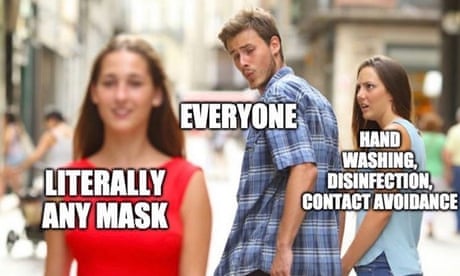What Can You Do to "Flatten the Curve"?
Welcome to the second post of the “ConqueringCorona Blog”! Today, we will be talking about certain precautionary measures you can take to stay safe during the COVID-19 pandemic. As the virus is spreading rapidly, we must follow the safety measures established by the World Health Organization (WHO) and the Center for Disease Control and Prevention (CDC) to “flatten the curve”, an expression you may have heard before.
Here's a meme that relates to the topic:

https://www.theguardian.com/commentisfree/2020/apr/05/coronavirus-lockdown-parents-meme-family-whatsapp
The graph above from usatoday.com highlights the exact reason we must follow these measures. On the graph, the x-axis represents the number of days since the first case, and the y-axis represents the total number of daily cases. As you know, hospital capacities around the world are not infinite, and can only take in a certain amount of patients at a time given the available medical equipment and staff. As the virus is in the earlier stages of spread, there are two possible outcomes: the tall curve and the flat curve. The tall curve reflects the outcome if as a society, mitigation efforts are minimally followed. In this case, the number of cases are higher because of the failure to follow these efforts, and as a result, hospital capacity is surpassed. This will induce a greater number of casualties as many people will not acquire adequate medical care to help them overcome the negative effects of the virus, something we will discuss in a future blog. The second and the more optimal case is considering we all follow the precautionary measures set by the CDC. In this case, the rate in which the daily cases increase is lower and over a long period of time. This extra time allows for the amount of cases at a certain time to be lower than the first case. In fact, it is low enough to accommodate hospital capacity and ensure that most to all victims receive the adequate treatment they need to fight the disease.
Here are some of the measures we advise you to follow to “flatten the curve”!
- Know how it spreads- knowledge is power! We will be making a blog about the biological mechanisms shortly.
- Clean your hands often- CDC suggests using 60% alcohol hand sanitizer or washing your hands with soap and water for 20 seconds
- Avoid touching your nose, eyes, and mouth- the virus could be on your hands without you knowing it, and it can enter your body when you touch your face subconsciously
- Social Distancing- it is optimal for you to stay at home and not go outside at all, but at least 6 feet of distance is recommended if you do go outside
- Stay home if you feel sick- even if you do not test positive for COVID-19, it is suggested for you to stay at home
- Cover coughs and sneezes with the inside of your elbow- wash your arm and hands in the bathroom shortly after
- Throw away used tissues in the trash- do not leave them around.
- Wear a facemask if you are sick, or if you are caring for someone who is sick. It is also effective if you go outside to buy necessities-face masks are very effective in preventing the virus from entering your body
- Clean and disinfect regularly used surfaces on a daily basis- this includes electronic devices, door handles, kitchen supplies, tables, furniture, and so on
Here's a meme that relates to the topic:

https://www.theguardian.com/commentisfree/2020/apr/05/coronavirus-lockdown-parents-meme-family-whatsapp
We understand how following these can be arduous and can require an extensive amount of self control, but we urge you to do so so that you do not accidentally spread the disease to your loved ones. Every precaution you take can help flatten the curve, so please do not be lazy or indifferent! Thank you for reading and please stay tuned for future posts! We greatly appreciate your time! Please leave comments and subscribe to email notifications on the left!
Total Confirmed Cases *As of March 29th, 2020* :
Global: 721,584 (Increased by appx. 60,000)
United States: 140,886 (Increased by appx. 20,000)
New Jersey: 13,386 (Increased by appx. 2,000)
*Increases from March 28th*
Data sources:
Total Confirmed Cases *As of March 29th, 2020* :
Global: 721,584 (Increased by appx. 60,000)
United States: 140,886 (Increased by appx. 20,000)
New Jersey: 13,386 (Increased by appx. 2,000)
*Increases from March 28th*
Data sources:


Comments
Post a Comment